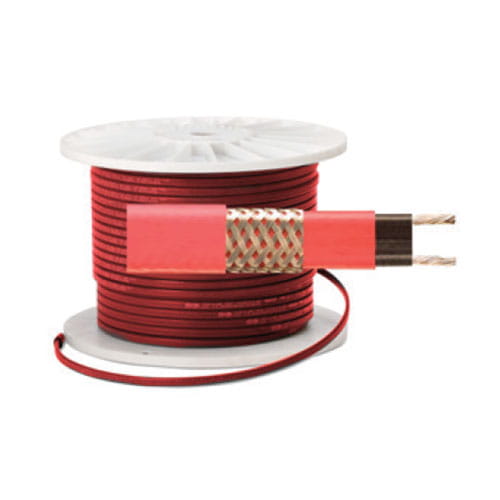Self-regulating heating cables ?
Self-regulating heating cables, also known as self-limiting or self-regulating heat trace cables, are a type of electrical heating cable designed to regulate their own heat output based on the temperature of the surrounding environment. These cables are used in various applications to maintain or raise the temperature of pipes, roofs, floors, and other surfaces. Here’s how they work and their key features:

How Self-Regulating Heating Cables Work
- Construction: Self-regulating heating cables consist of two parallel conductors embedded in a semi-conductive polymer core. This core has a positive temperature coefficient (PTC), meaning its resistance increases as the temperature rises.
- Self-Regulation: When the ambient temperature decreases, the polymer contracts, creating more conductive paths for electricity to flow between the conductors, which increases the heat output. Conversely, when the temperature rises, the polymer expands, reducing the number of conductive paths and thus decreasing the heat output. This self-regulation ensures that the cable does not overheat or waste energy.
Key Features
- Energy Efficiency: Since the cables adjust their heat output based on the ambient temperature, they are highly energy-efficient, only consuming power when necessary.
- Safety: The self-regulating nature prevents the cables from overheating, reducing the risk of fire or damage to the heated object.
- Durability: These cables are often resistant to UV rays, chemicals, and moisture, making them suitable for outdoor and industrial applications.
- Easy Installation: Self-regulating heating cables can be cut to length in the field and can overlap without the risk of hotspots, simplifying the installation process.
- Versatility: They are used in a wide range of applications, including pipe freeze protection, roof and gutter de-icing, floor heating, and process temperature maintenance in industrial settings.
Applications
- Pipe Freeze Protection: Preventing pipes from freezing in cold environments by maintaining a consistent temperature.
- Roof and Gutter De-Icing: Preventing ice dams and icicles by keeping roof edges and gutters warm.
- Floor Heating: Providing comfortable warmth in residential and commercial buildings.
- Process Temperature Maintenance: Ensuring consistent temperatures in industrial processes, such as in chemical plants and food processing facilities.
Advantages
- Reliability: Continuous and even heat distribution ensures reliable performance.
- Flexibility: Can be used in a variety of environments and tailored to specific needs.
- Cost-Effective: Reduces energy consumption and minimizes maintenance costs over time.
Conclusion
Self-regulating heating cables are a versatile and efficient solution for preventing freezing, maintaining temperatures, and providing heat in various applications. Their ability to adjust heat output based on ambient conditions makes them an ideal choice for both residential and industrial uses.
